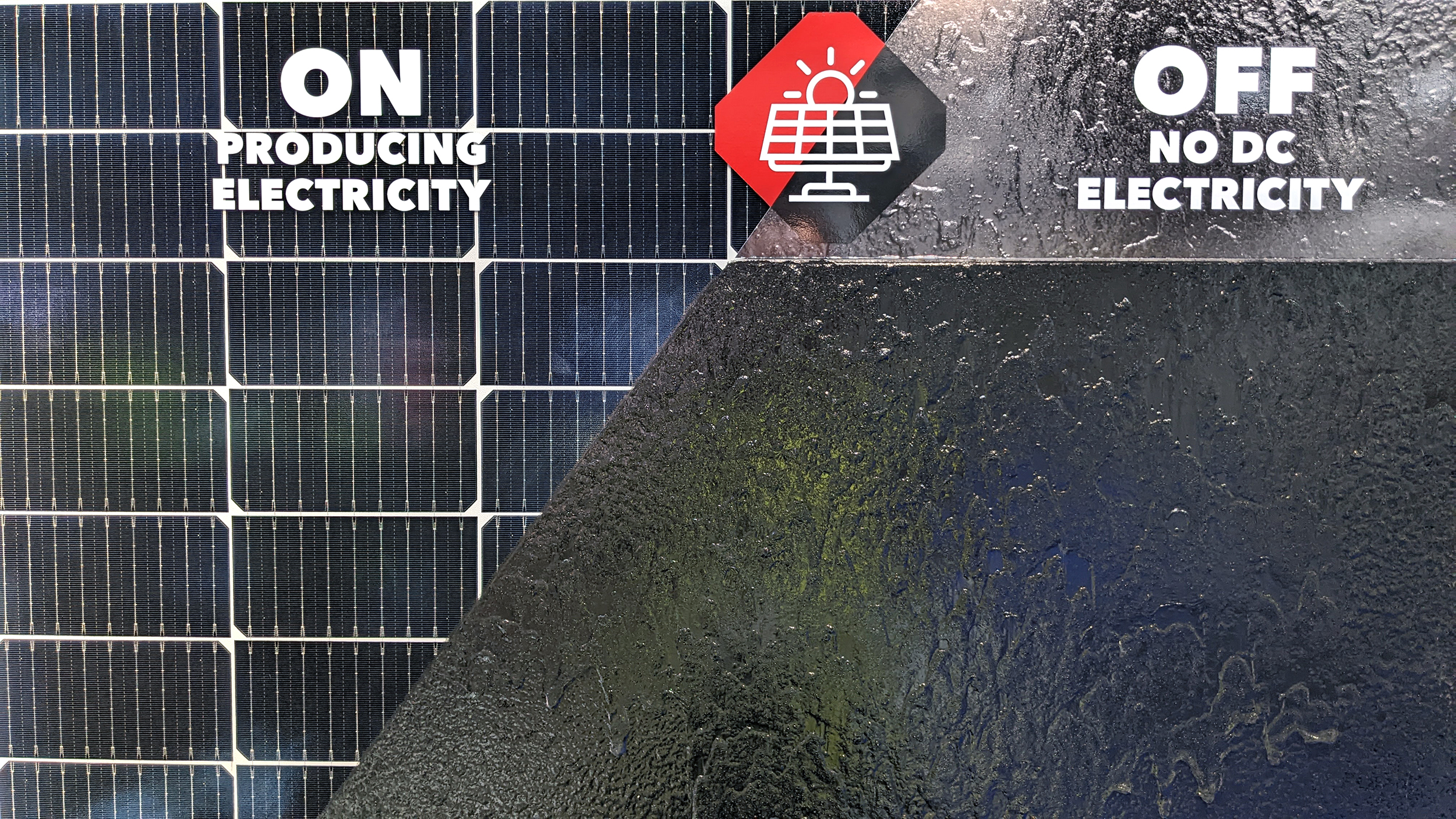Ensuring Safety in Solar PV Systems: A Simple Solution for First Responders
Solar photovoltaic (PV) panels are a sustainable and increasingly popular source of clean energy. However, it’s important to understand that they can also pose a potential electrical hazard, especially in emergency situations. In this article, we’ll explore the need for safety measures when dealing with solar PV systems and introduce a straightforward solution that makes these systems safe for first responders.
The DC Danger Zone:
Solar PV panels generate direct current (DC) electricity when exposed to sunlight. This DC electricity can be potentially lethal. All solar PV systems have safety features like isolation switches and arc fault detection equipment, but these operate downstream of the panels. This means that the panels and their wiring remain live when exposed to light, creating what experts call the “DC Danger Zone.”
Safety Concerns:
Fires involving solar panels should not be tackled by untrained personnel because these panels pose an electrical hazard. Compromised solar PV systems present a live DC electrical risk that can escalate into a fire if not addressed promptly. However, reporting such incidents remains challenging due to the lack of dedicated categories in national incident reporting systems.

Impact on Fire Dynamics:
Solar PV systems integrated into structures can alter how fires spread. Factors like the gap between the panels and the roof, roof materials, and the structural load impact fire dynamics. First responders may not have the technical knowledge to deal with these complexities, making it crucial to provide them with a simple and effective solution.
The Solution:
Trained personnel can apply a light-blocking coating to solar panels using a pressure vessel or drone delivery method. This coating effectively de-energizes the entire solar PV system, making it safe for first responder operations. The PVStop coating should possess additional safety benefits, such as being fire retardant, non-flammable, non-conductive, non-toxic, and environmentally friendly when disposed of.

Restoring Safe Operation:
Once applied, the protective coating can be peeled off by a qualified electrical technician, restoring the solar PV system to safe operation. It’s essential to follow the manufacturer’s recommended instructions during application to ensure that the panels are properly de-energized.

Global Collaboration:
This safety solution has been developed with input from global experts and collaborations with firefighting organizations. Organizations like the London Fire Brigade, Singapore Civil Defence, and New York Fire Department have embraced this solution. PVStop have also actively contributed to safety standards and regulations in the field.

Solar PV systems are a valuable source of renewable energy, but they come with unique safety challenges. Ensuring the safety of first responders is paramount when dealing with solar PV incidents. The application of a light-blocking coating is a simple yet highly effective way to de-energize solar panels and make them safe for emergency operations. By embracing this solution and collaborating on safety standards, we can ensure that solar PV systems continue to contribute to a sustainable future while minimizing risks.

